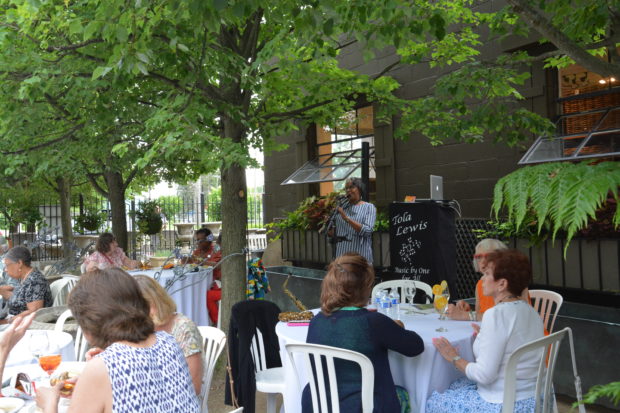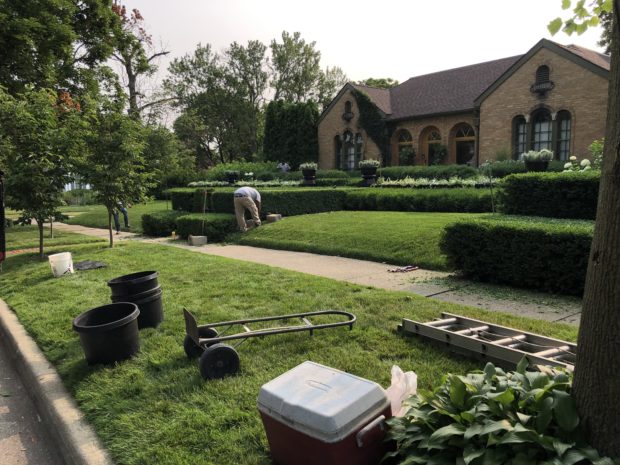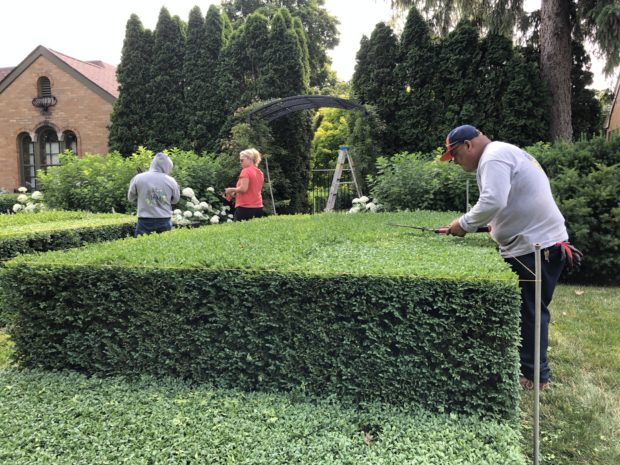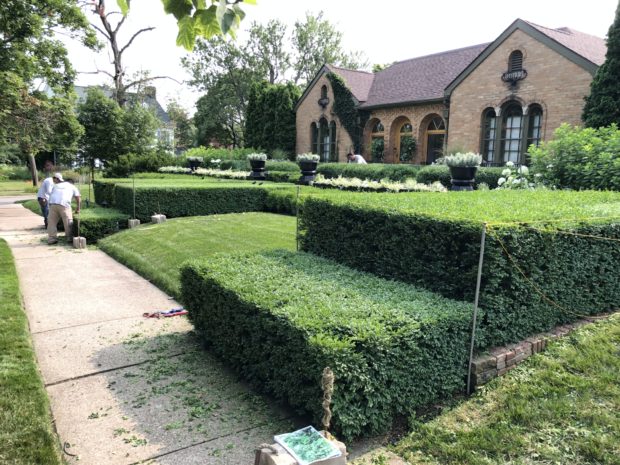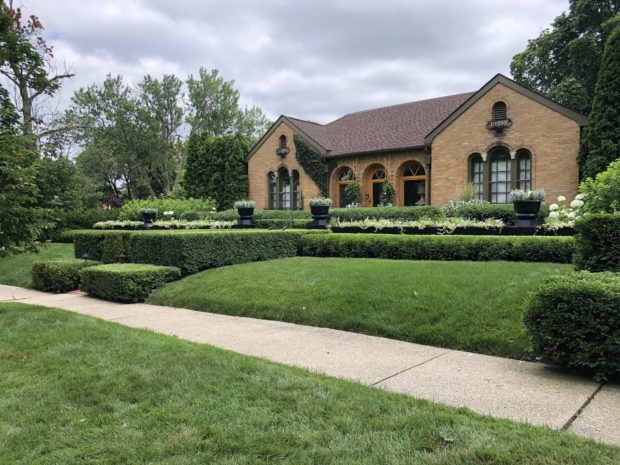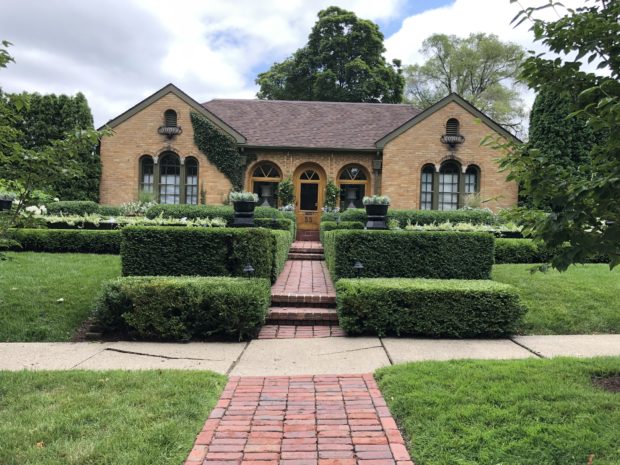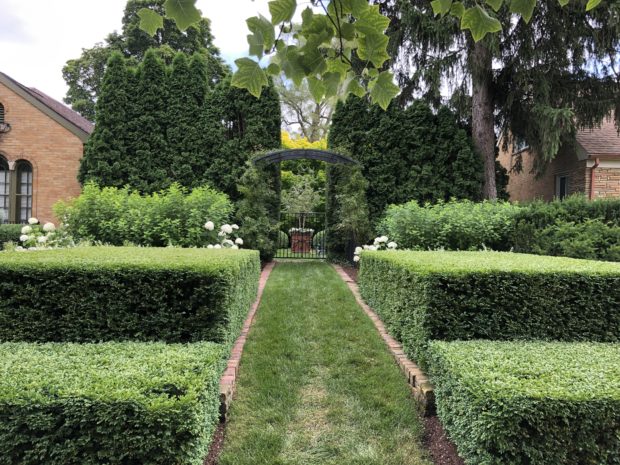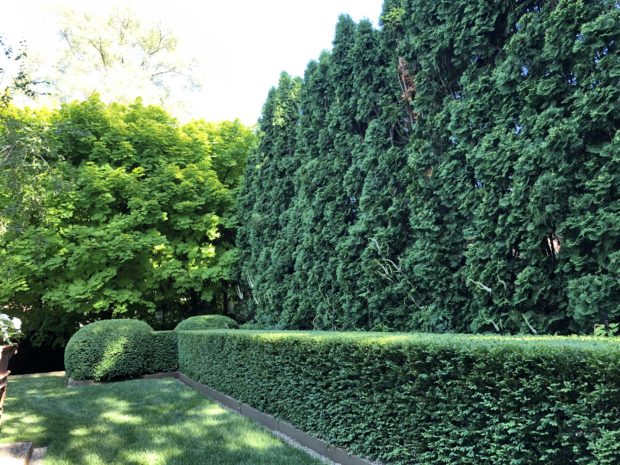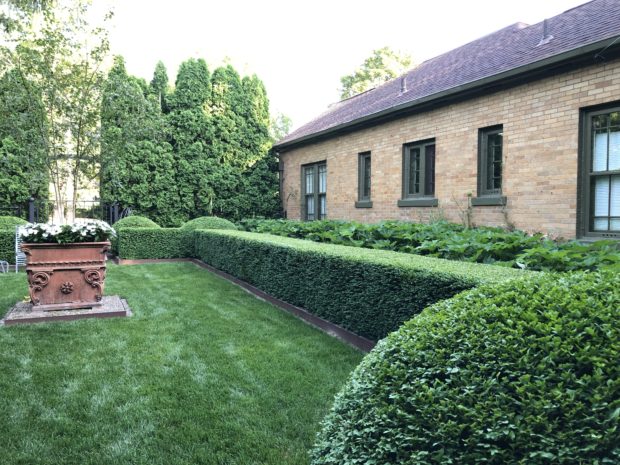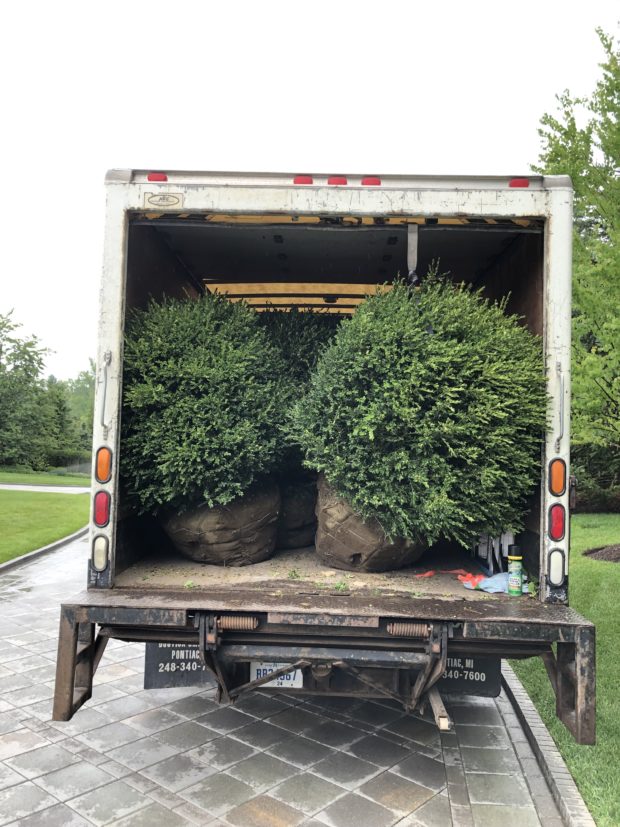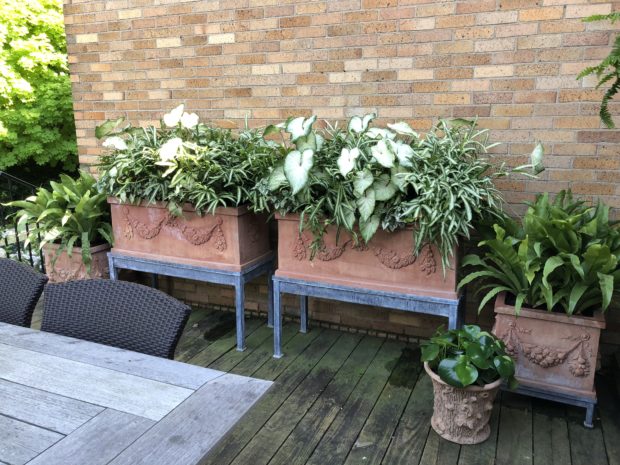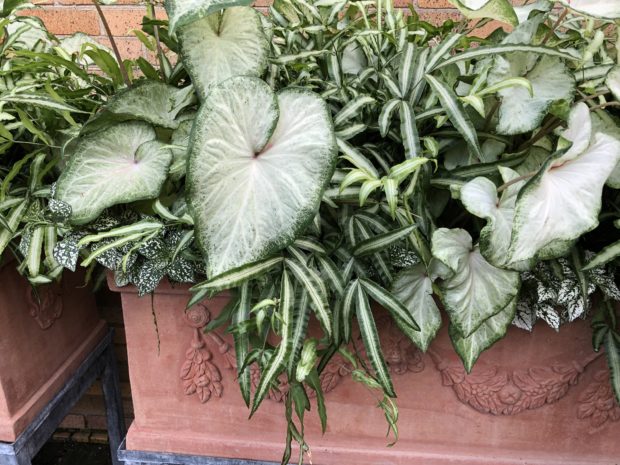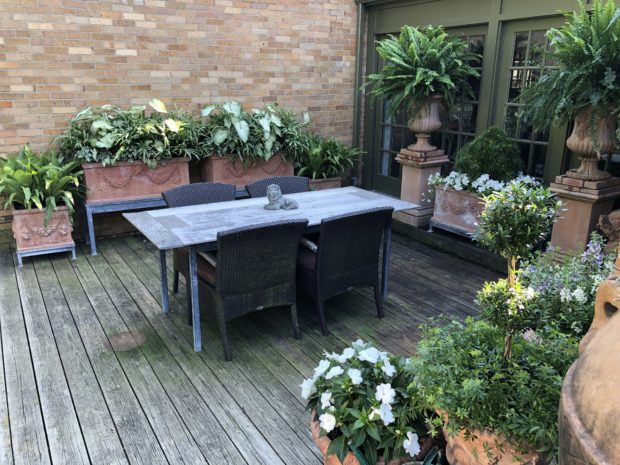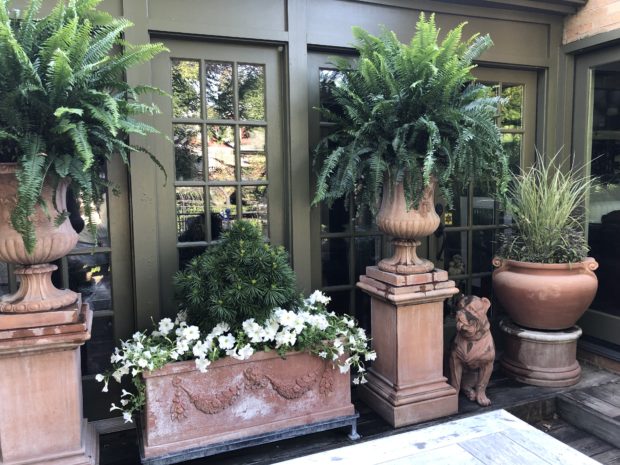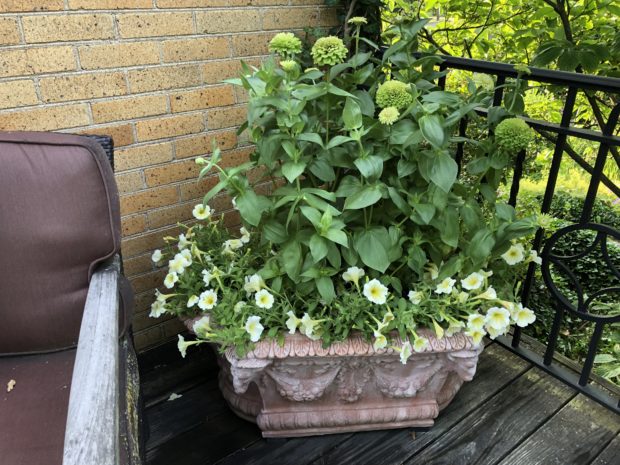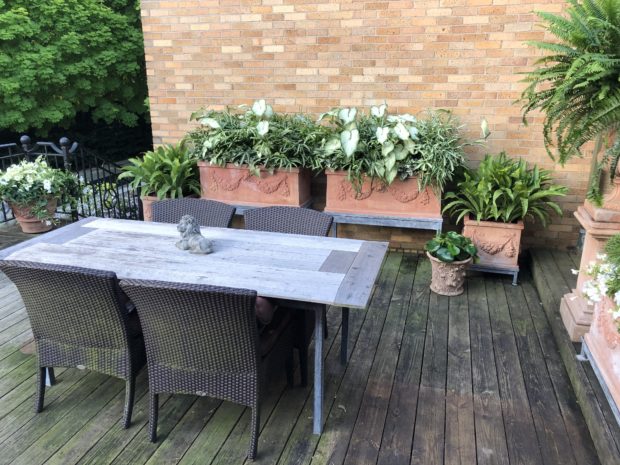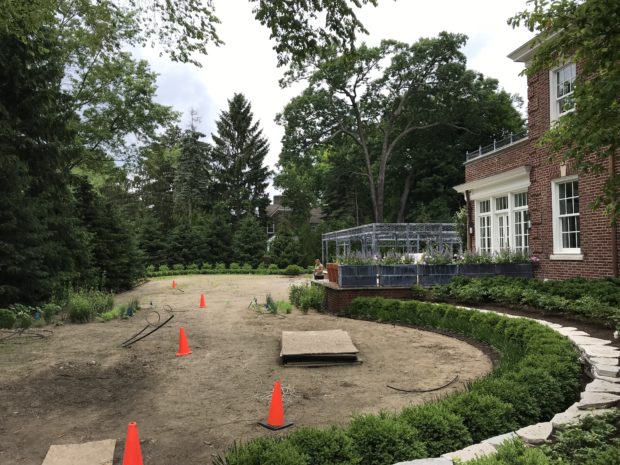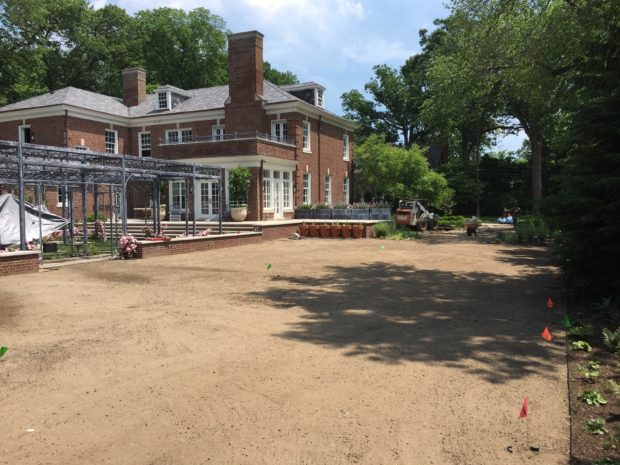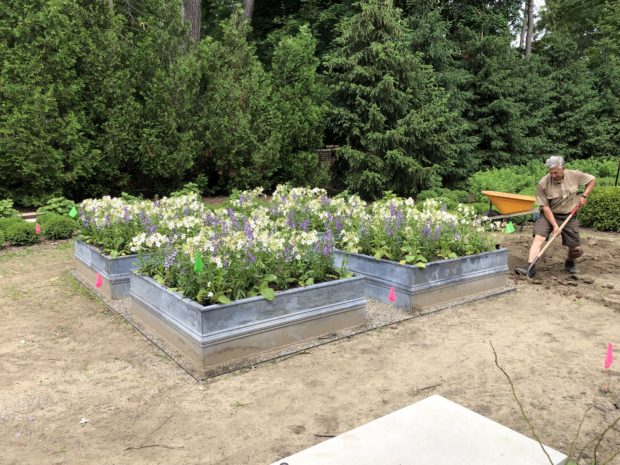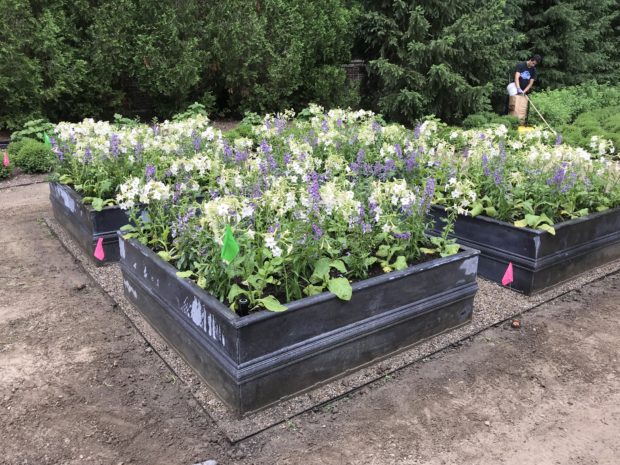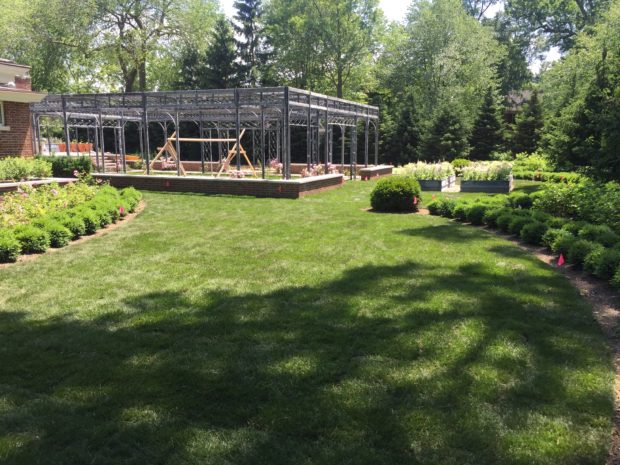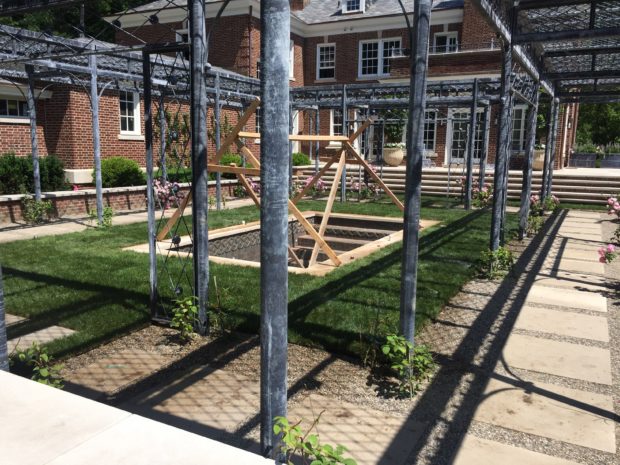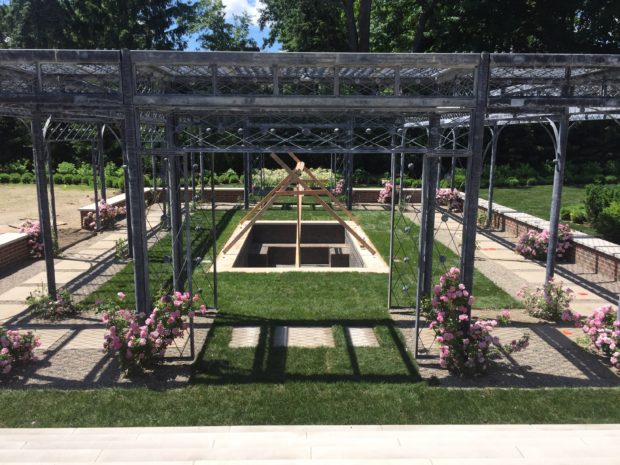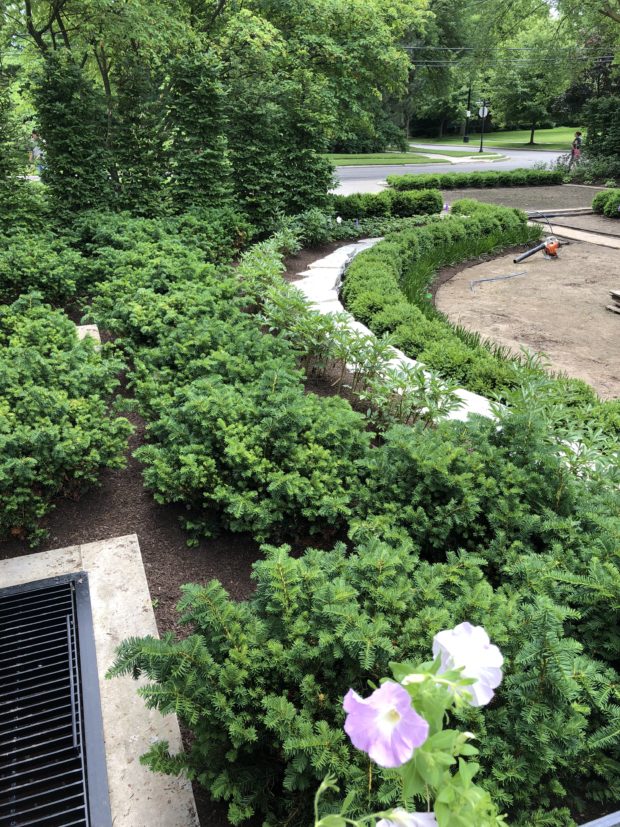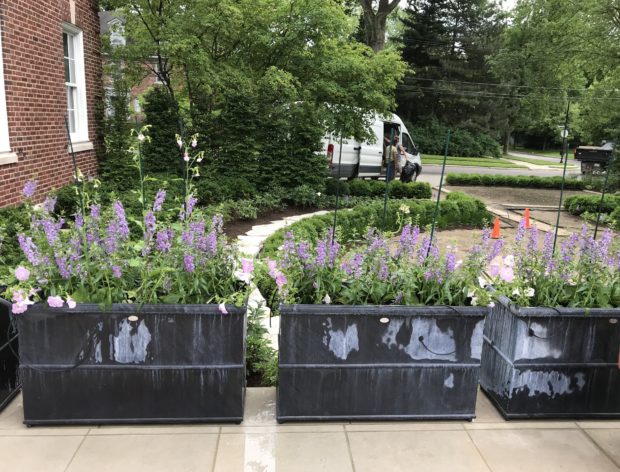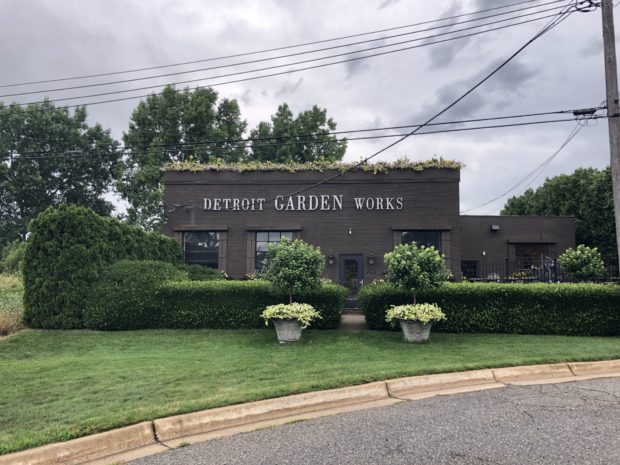 The twelfth Garden Cruise was surely one of our best ever. The hot weather broke just in time, the rain was minimal, the gardens looked great, and our after tour reception was a summer delight. The best news was the fact that we raised more for the Greening this cruise around than ever before. Dave tells my that by his accounting, we raised $37,275.00 via ticket sales and donations. Every penny of that will go to the Greening to use as they see fit. I am especially proud of the collective effort. There is the garden making. My crew and I do that part. But then there are the clients who agree to permit touring, the last minute maintenance on said gardens, the tickets sales, those gardeners keen to take our tour, and the sprucing up at the shop-all of which culminates in a day for every ticket holder spent viewing gardens, and an early evening reception. It was a perfect moment.
The twelfth Garden Cruise was surely one of our best ever. The hot weather broke just in time, the rain was minimal, the gardens looked great, and our after tour reception was a summer delight. The best news was the fact that we raised more for the Greening this cruise around than ever before. Dave tells my that by his accounting, we raised $37,275.00 via ticket sales and donations. Every penny of that will go to the Greening to use as they see fit. I am especially proud of the collective effort. There is the garden making. My crew and I do that part. But then there are the clients who agree to permit touring, the last minute maintenance on said gardens, the tickets sales, those gardeners keen to take our tour, and the sprucing up at the shop-all of which culminates in a day for every ticket holder spent viewing gardens, and an early evening reception. It was a perfect moment.
 I have had requests to publish pictures of the gardens on the tour, which I am sure I will do eventually. I was at home for the tour-I enjoy talking to gardeners about gardens. I did spend the evening at the reception at the shop, so I spent some time touring our shop gardens. Planting the shop for summer comes in those spaces between the days. This means we design and plant for summer at the shop whenever we have a few moments. That planting is an ongoing process in June.
I have had requests to publish pictures of the gardens on the tour, which I am sure I will do eventually. I was at home for the tour-I enjoy talking to gardeners about gardens. I did spend the evening at the reception at the shop, so I spent some time touring our shop gardens. Planting the shop for summer comes in those spaces between the days. This means we design and plant for summer at the shop whenever we have a few moments. That planting is an ongoing process in June.
 The planting in the ground comes first. That planting time takes far less time than what it takes to devise a planting scheme based on what plant material is available. I always design for the ground first. I like working from the ground up. All else comes as a result of what is planted at grade. Once the ground is planted, the pots and the boxes on the roof get planted in concert with, and in reaction to what we have growing.
The planting in the ground comes first. That planting time takes far less time than what it takes to devise a planting scheme based on what plant material is available. I always design for the ground first. I like working from the ground up. All else comes as a result of what is planted at grade. Once the ground is planted, the pots and the boxes on the roof get planted in concert with, and in reaction to what we have growing.
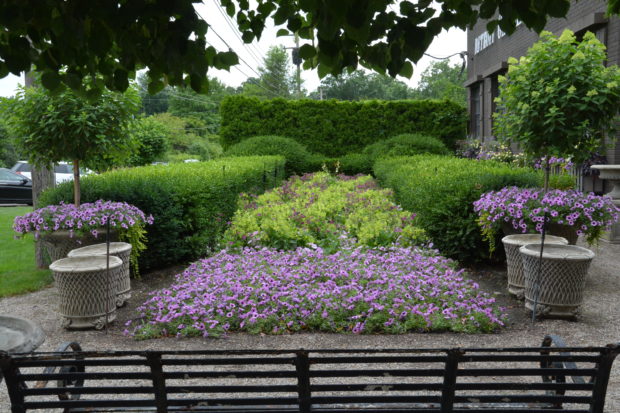 The night of our tour reception, the garden at the shop looked so beautiful.
The night of our tour reception, the garden at the shop looked so beautiful.
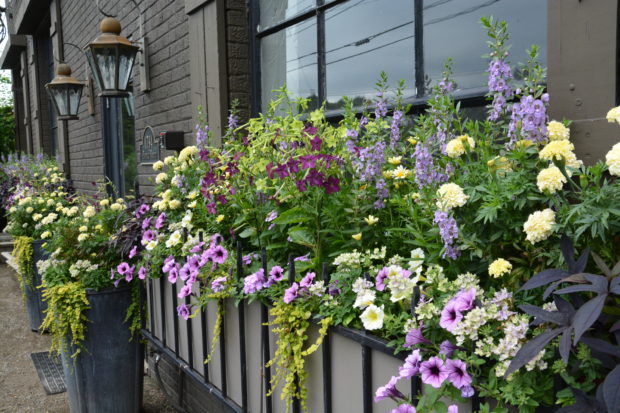 A color scheme involving pale yellow, lime, and various shades of red violet makes a statement about summer.
A color scheme involving pale yellow, lime, and various shades of red violet makes a statement about summer. 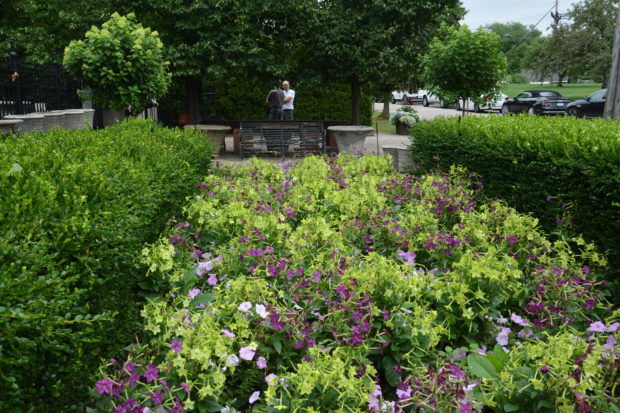 The Garden Cruise reception was entirely orchestrated by Rob. He set the stage, and managed to be at the gate welcoming guests. The big idea? Rob shops for Detroit Garden Works. Every year he presents a collection of interest to any gardener. But this day, he put on a party.
The Garden Cruise reception was entirely orchestrated by Rob. He set the stage, and managed to be at the gate welcoming guests. The big idea? Rob shops for Detroit Garden Works. Every year he presents a collection of interest to any gardener. But this day, he put on a party.
 To follow are pictures of our Cruise reception. Enjoy them. Next year, think about taking the cruise.
To follow are pictures of our Cruise reception. Enjoy them. Next year, think about taking the cruise.






